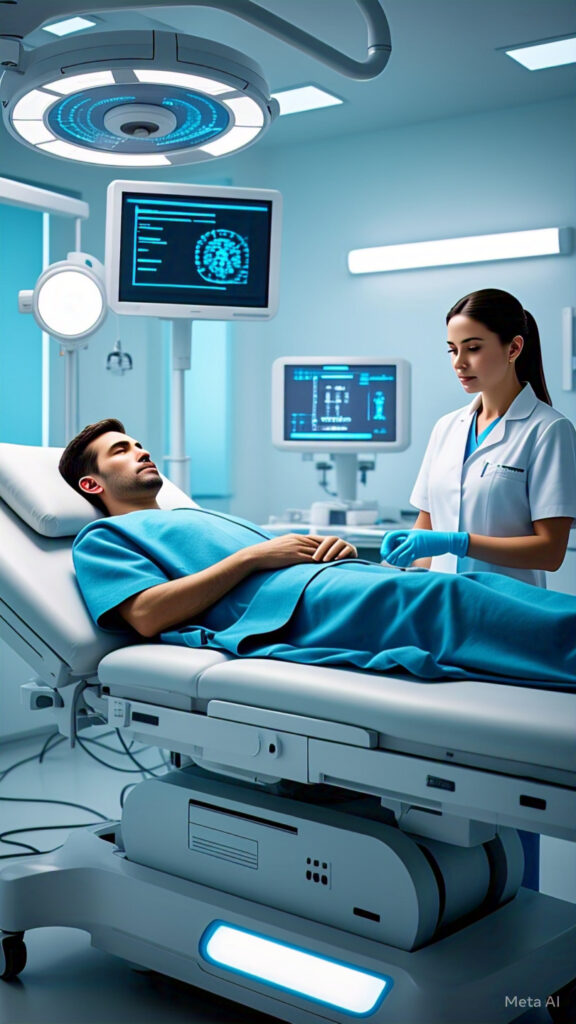Sensory-Driven Healthcare is a modern approach to health and wellness that uses sensory inputs like sight, sound, touch, smell, and even taste to influence health outcomes. It focuses on subtle, often non-invasive ways to support physical and mental well-being through carefully designed sensory experiences. In 2025, the healthcare industry is experiencing a paradigm shift with the advent of sensory-driven technologies. This trend integrates human senses—sight, sound, touch, smell, and taste—into the healthcare experience in innovative and immersive ways. By enhancing diagnosis, treatment, and overall patient care, sensory-driven healthcare is set to redefine the way we approach medical practice, making it more personalized, efficient, and compassionate.
The Role of Sensory Technology in Diagnosing Diseases
Sensory technology has already begun transforming diagnostics. One of the most promising innovations is the use of sensory-enabled imaging systems, which go beyond traditional visual scans. These advanced technologies incorporate multi-sensory data, allowing medical professionals to detect diseases at an early stage with greater precision. For example, systems that combine touch and sight—such as haptic feedback imaging devices—can help doctors feel the texture and density of tissues while simultaneously viewing high-definition scans. This multisensory approach increases diagnostic accuracy, improving outcomes for conditions like cancer, cardiovascular disease, and neurological disorders.

Furthermore, wearable devices that measure sensory data (such as temperature, heart rate, or blood oxygen levels) are increasingly being used for continuous health monitoring. These devices can alert both patients and doctors to abnormal trends before they develop into more serious health issues, creating opportunities for early intervention and personalized care plans.
Personalized Patient Care Through Sensory Feedback
The integration of sensory technologies allows for highly personalized healthcare experiences. Virtual reality (VR) and augmented reality (AR) systems, which use sensory feedback to create immersive environments, are being used to reduce pain, alleviate anxiety, and improve recovery outcomes. These systems provide sensory-rich environments that can engage the senses of sight, sound, and touch to distract patients during painful procedures, enhancing comfort and overall well-being.
For example, patients undergoing chemotherapy or other painful treatments can be immersed in calming virtual environments like beaches or forests. The sensory stimuli in these environments have been shown to reduce stress, lower heart rates, and even decrease the need for medication. The ability to tailor these experiences based on individual preferences—whether they prefer natural sounds or visual stimuli—has made them more effective than ever before.
Smart Healthcare Environments: The Future of Hospitals
The design of healthcare facilities is also being revolutionized by sensory-driven technologies. Hospitals and clinics are now incorporating multisensory experiences to enhance the healing process. Research has shown that the environment plays a significant role in patient recovery. Sensory-driven elements such as mood-enhancing lighting, soothing sounds, and even therapeutic scents are being integrated into hospital rooms and waiting areas to reduce stress, improve mood, and speed up recovery times. Also, by the age of 40, women can start losing as much as 3–8% of muscle mass per decade. Strength training is one of the most effective ways to combat this loss.
For instance, hospitals are experimenting with adjustable lighting that mimics natural daylight, helping to regulate patients’ circadian rhythms and improve sleep patterns. Additionally, scent diffusers are being used to release calming scents, such as lavender or eucalyptus, which have been scientifically proven to lower anxiety levels.

Using Sensory Data to Monitor Chronic Conditions
Chronic conditions such as diabetes, hypertension, and asthma require constant monitoring and management. In 2025, we can expect a surge in wearable devices and smart health gadgets that not only track basic metrics like heart rate and blood pressure but also gather sensory data to offer more nuanced insights into a patient’s health.
For example, devices that measure skin temperature, sweat levels, or even brain waves are helping doctors monitor how a patient’s body is responding to treatment. If a patient is undergoing stress or an adverse reaction to medication, these sensors can provide real-time data that can be used to adjust treatment protocols promptly. This type of monitoring will lead to better management of chronic diseases, preventing emergencies and reducing hospital readmissions.
Enhancing Mental Health Through Sensory Stimulation
Mental health care is another area that stands to benefit greatly from sensory-driven innovations. Sensory therapies, such as light therapy, sound therapy, and even aroma therapy, are becoming more popular in the treatment of conditions like depression, anxiety, and PTSD.
For instance, light therapy—exposing individuals to specific wavelengths of light—has been shown to be effective in treating seasonal affective disorder (SAD) and other mood disorders. Similarly, therapeutic soundscapes—such as binaural beats or nature sounds—are used in conjunction with cognitive-behavioral therapy to help patients manage stress and anxiety. By using a more holistic approach that taps into sensory stimuli, mental health professionals can provide treatments that are tailored to the individual, leading to better outcomes.

The Future of Sensory-Driven Healthcare: A Holistic Approach
The future of healthcare in 2025 and beyond will be increasingly holistic, with sensory-driven technology playing a central role. By integrating advanced sensory tools into patient care, healthcare providers will be able to offer more empathetic, patient-centered experiences. Sensory feedback not only improves clinical outcomes but also enhances the human connection between patients and providers.
As healthcare continues to evolve, we will likely see even more sophisticated uses of sensory technologies—such as wearable devices that offer real-time sensory feedback to both patients and doctors, as well as AI-driven systems that can interpret sensory data and provide personalized treatment recommendations. Ultimately, sensory-driven healthcare is not just about technology; it’s about creating a deeper connection between patients and the care they receive. This will usher in an era of healthcare that is more attuned to the human experience, paving the way for better outcomes and a more compassionate approach to healing.


2 thoughts on “Sensory-Driven Healthcare the Ultimate Trend of 2025”